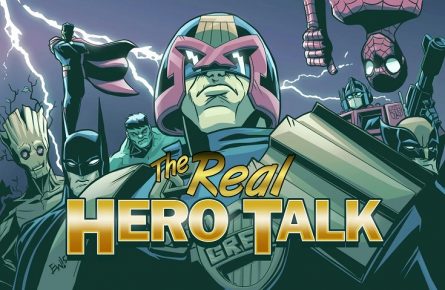Behind the Line: Kickstarter games turn 10,000

Last week Kickstarter announced that they have hit a milestone of 10,000 video game projects funded. Nevermind that there’s also 1500 mobile video game projects, promoting a false dichotomy where mobile games are not presented as video games, even though numerous games are on both platforms. So, really, the number is over 12,000 funded projects now.
I’ve never actually spent much time looking through Kickstarter projects. I don’t have the time or resources to try to apply a critical eye to it like Youtuber iDubbbz, or Jim Sterling does for Steam Greenlight. Instead I need news headlines to catch my eye. This headline made me think that this is a pretty good time to wade in a bit and see what got us to this “momentous” achievement.
The Good
Of course there are early success stories. FTL: Faster than Light is a title that not only succeeded as a Kickstarter, but was also an excellent game, proving the viability of the platform to service independent, off beat, creative projects that may have difficulty finding publisher support.
Then there are the prestige projects. At the GDC Awards shows I heard Hyper Light Drifter nominated for many awards. Looking at it now I am pleasantly surprised to see that it was funded through Kickstarter. Here’s a project that flourished through Kickstarter support.
The Under-represented
Many projects gravitate to Kickstarter because they can’t, or don’t feel comfortable trying to get publisher support. One probable reason for that is if the nature of the game doesn’t fit what publishers want to invest in. This is an oversimplification, as there can be many reasons for the publishers choices, or the developers choices. This is the most prominent possibility that I see, though.
What this means is still very significant. When looking through funded projects, they look nothing like the shelves of a GameStop, or the games section at Best Buy. (The Steam storefront, containing just about everything, naturally falls between these two.) The topics covered by these games, and the styles they use are far more diverse than major releases. I would imagine that the teams behind these projects are a more diverse lot as well, though that is only a supposition on my part. However if this is an effective inroad to have more developers from different backgrounds, (for example, women are a notably under-represented group in the industry) then I’m all for it. More points of view simply add to the tapestry of storytelling that we have available in our medium.
The Insistent
One of those reasons that developers may not want to deal with publishers is because they feel their idea has an audience, while the publisher does not. This gives some developers an alternative, instead taking their ideas, and desires to continue genres and properties that publishers consider ‘dead’.
The top most funded projects all reflect this possibility. Shenmue 3, Bloodstained, Yooka-Laylee, and yes I also count Mighty No. 9 in this group, even if most of us would rather just ignore it.
Congrats on the launch, @MightyNo9!
It's better than nothing. pic.twitter.com/WsXHWtAlaX
— Sonic the Hedgehog (@sonic_hedgehog) June 21, 2016
The Supportive
Some of these projects don’t get publisher support, and the publishers are wrong about the market viability of the project. However, for some the publishers are correct. Some of these projects won’t make money as a standard product. Kickstarter isn’t a market place, though. You don’t pledge to Kickstarter and get a product out. This is more like a PBS pledge drive, where most of the rewards aren’t worth the donation. Instead, pledges are showing support for the idea of the product.
If I see a game that I want to support, and think it’s worth $1000 of my money to help it become a reality, I know I won’t get $1000 in goods back. This makes the market forces change significantly. There can be projects that would bomb as a standard product with a $10-$60 price point. But when you remove that restriction, and people can pay what they feel it is worth to them to support the project, all of a sudden, when it works, you get a lot of pressure taken off. Some of these projects are successful financially even before they are completed. Sometimes this gives us great stuff like Hyper Light Drifter. Other times…
The Insightful
With the possible exception of allowing more traditionally underrepresented viewpoints into game development, I think the most significant contribution the platform has given us is to drop the veil and let some people see more of the process. We see projects that look half baked, conceptually flawed, teams falling apart, technology failures, and other unforeseen problems. It can serve as a rude awakening for some who become not only financially, but emotionally invested in a project and see that even when a project is run properly it can still all fall apart sometimes.
Take, for example, CLANG, which is fairly high on the most funded video game projects on Kickstarter. (around #60) Here’s Dan Ibbertson speaking about it and other funded Kickstarter projects that didn’t produce a product via. Guru Larry’s channel:
While this project CLEARLY would have benefited from more game dev experience earlier in the planning, this doesn’t appear to be a scam. Everyone was acting in good faith, and trying their best, but it wasn’t able to come together.
So yes, while 10000 projects have been funded on Kickstarter, we all know many did not produce in the end. This goes to show to all that in any time, with any business model, Video games is a tough business.
Kynetyk is a veteran of the games industry. Behind the Line is written to help improve understanding of what goes on in the game development process and the business behind it. From “What’s taking this game so long to release”, to “why are there bugs”, to “Why is this free to play” or anything else, if there is a topic that you would like to see covered, please write in to kynetyk@enthusiacs.com







![[PROTOTYPE]](http://www.enthusiacs.com/wp-content/uploads/2020/03/title-104x104.jpg)
Leave a Reply